How was the wheel invented, and how has it evolved throughout history? The origin and timeline of the wheel begin with the prehistoric utilization of circular motion, man-made prehistoric round objects, the rollers made of tree logs, and finally the potter’s wheel. The first pottery wheel, as the forerunner of the wheel, was invented in the Near East around 5200 BC. The first pottery wheel with an axle design was invented in Mesopotamia around 4200 BC, and the first wheel used for transportation is believed to have been invented by Sumerians in Mesopotamia in about 3500 BC. The wheel is the simplest but most important invention in human history. The invention of the wheel revolutionized the first recorded instances of warfare, allowed cargo to be transported over long distances, and enabled the development of the first automated processes, along with more efficient exploration and colonization of the planet.
- Prehistory – Round Objects and Rotational Motion
- 12,000 BC – Log Rollers
- 5200 BC – Potter’s Wheel
- 4500 BC – Spindles
- 4200 BC – The First Wheel with An Axle
- 4000 BC – The First Wheel Used for Transportation
- 3500 BC – Wooden Wheel with Axle
- 3000 BC – The First Chariots
- 2000 BC – First Spoked Wheels
- 1323 BC – The Chain Brakes
- 750 BC – Wheels with An Iron Rim
- 300 BC – Water Wheel
- 100 BC – Wheelbarrow
- 1035 – Spinning Wheel
- The 1800s – The First Lever Brakes
- 1845 – Hardened Rubber Car Tire
- 1848 – Mansell Wheel
- 1902 – The First Drum Brakes
- 1915 – Radial Car Tire
- The 1930s – Airless Tires
- Conclusion
- FAQ About the Timeline of the Wheel
Prehistory – Round Objects and Rotational Motion

The origin and invention of the wheel can be traced back to our natural inclination towards round objects. Circular shapes can be found throughout nature. Animal eyes, stars, circles in water, and fruits are just a few examples. In human culture, round huts have been used for tens of thousands of years. The majority of natural forms are rounded, and for us, they are more comfortable and secure than sharper forms like animal teeth or pointed rock.
In 400,000 BC, fire by means of heat could be generated by striking one piece of flint rock against another using a rotational motion. In 150,000 BC, beads and pendants were perforated using a technique where a rotating vertical motion was used to create holes. This method was improved with the help of tools such as a bow drill during the latest periods of prehistory.

And at least 20,000 years ago, Homo sapiens were swinging diamond-shaped bone objects called “bullroarers” (rhombus), which were attached at the end of a rope to produce strident sounds in a rotational motion. Dating from at least 18,000 BC, they are among the oldest musical instruments, still being used in Papua and Australia today.
12,000 BC – Log Rollers

The natural world is filled with spherical and mobile objects that could have been used as wheels by ancient humans. Humans discovered that rolling things over a circular surface, like a log from a fallen tree, made the task of moving the object easier.
The earliest known use of wheels was by Neolithic men, who used log rollers to transport heavy loads, such as large stones used for megalithic construction. From 12,000 BC to 3500 BC, the Neolithic people placed their loads on rollers made of logs.
However, some logs were always uneven, and this proved to be an inefficient method due to the difficulty of keeping everything in line. Archaeologists believe that humans later came up with the sledge as a way to drag large objects. The logs or sticks were placed beneath this sledge. To move the sledge from one roller to the next, humans placed many logs or rollers side by side or even created tracks out of logs.

It is believed that when the logs were worn down by being dragged with sledges, grooves were formed which then served as an axle for the sledges. It seems that after the invention of the potter’s wheel, wooden carts with wheels were widely available and quickly took the place of sledges.
The invention of the wheel began with the use of tree logs that were sliced horizontally and transformed into flat pieces of wood. These wooden disks were then placed on a circular axle, which was secured in place through the use of wooden pegs. This was the first method of creating a wheel.
The invention of using logs to transport heavy objects, such as the massive stone slabs used in megalithic burial structures or “dolmens,” was specifically intended for these large, tens of tons weighing stones. In Europe, several of those dolmens are dated to the late 5th millennium BC.
5200 BC – Potter’s Wheel
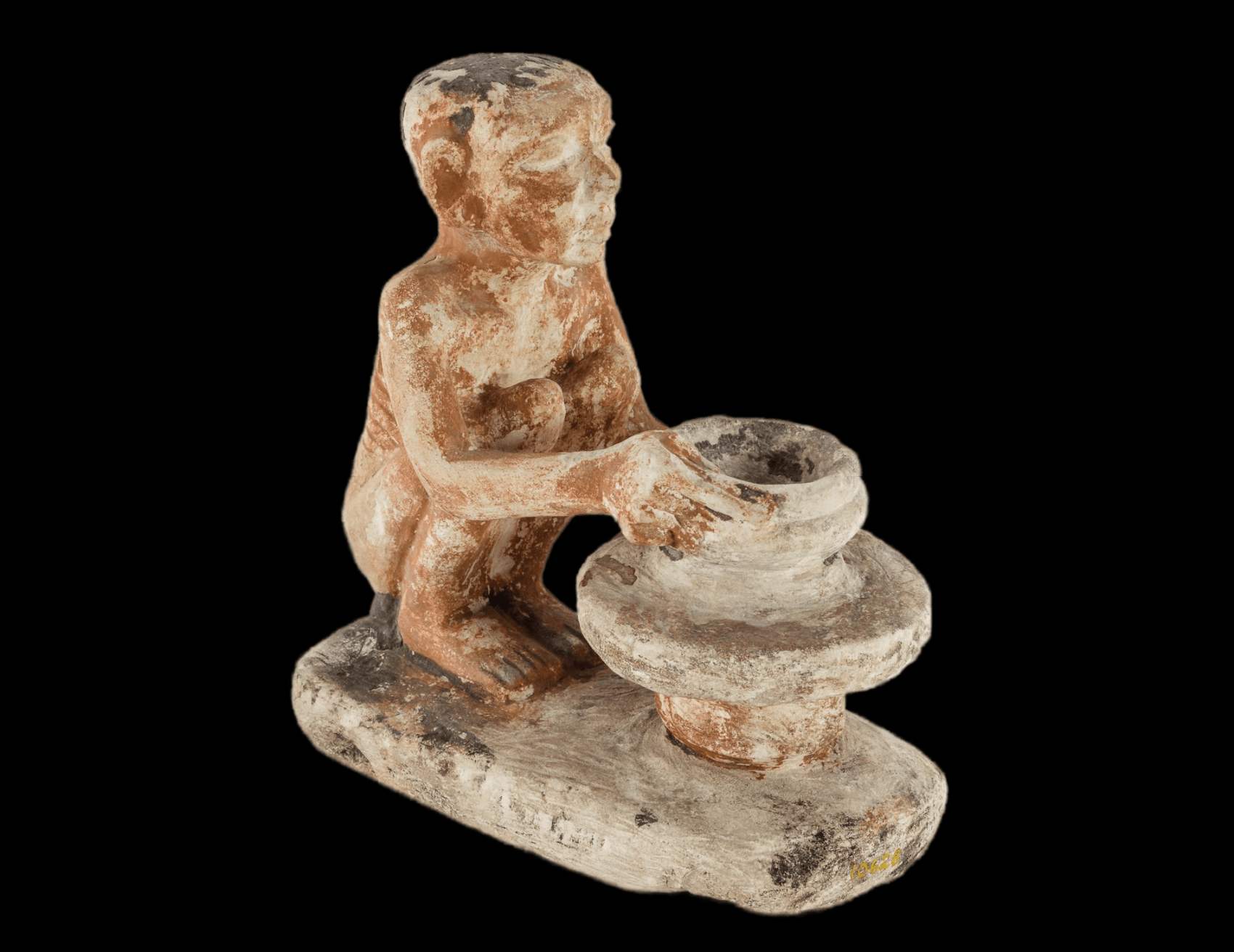
With the invention of the potter’s wheel around 5200 BC, wheels began to be used in industrial processes. The idea behind the rolling logs and the potter’s wheel was adapted to make the first wheel: In 3500 BC, wooden disks connected by an axle were invented.
The first known evidence of human-created wheels was discovered in Mesopotamia. Around 10,000 BC, the first ceramics made using the coiling method were created by placing mats or large leaves underneath the clay to rotate the pot instead of walking around it to add more coils.
Then, the tournettes, sometimes called “slow wheels,” were invented in the Near East around 5000 BC. They were the forerunners of the wheel, consisting of a disk rotated manually without an axle. The oldest slow wheel was discovered in Iran at the Tepe Pardis settlement from the prehistoric Halaf-Ubaid period of 5200–4700 BC.
4500 BC – Spindles

The domestication of sheep and the subsequent exploitation of wool led to the development of a tool similar to the bullroarer. A circular flywheel with a spindle fixed in its lower part is known as the “spindle whorl.” The spinner braided the strands of raw wool into a continuous thread, winding it at the same time around the rotating spindle.
These stone and particularly clay spindle whorls are the earliest known “wheels,” and despite their diminutive size, they had the concept of a transverse axle. Dating back to the 5th millennium BC, the spindle whorls were already widely used in Europe in the Copper Age (4500–3800 BC). One of the oldest shafts of a spindle is dated as far back as 4300 BC.
4200 BC – The First Wheel with An Axle
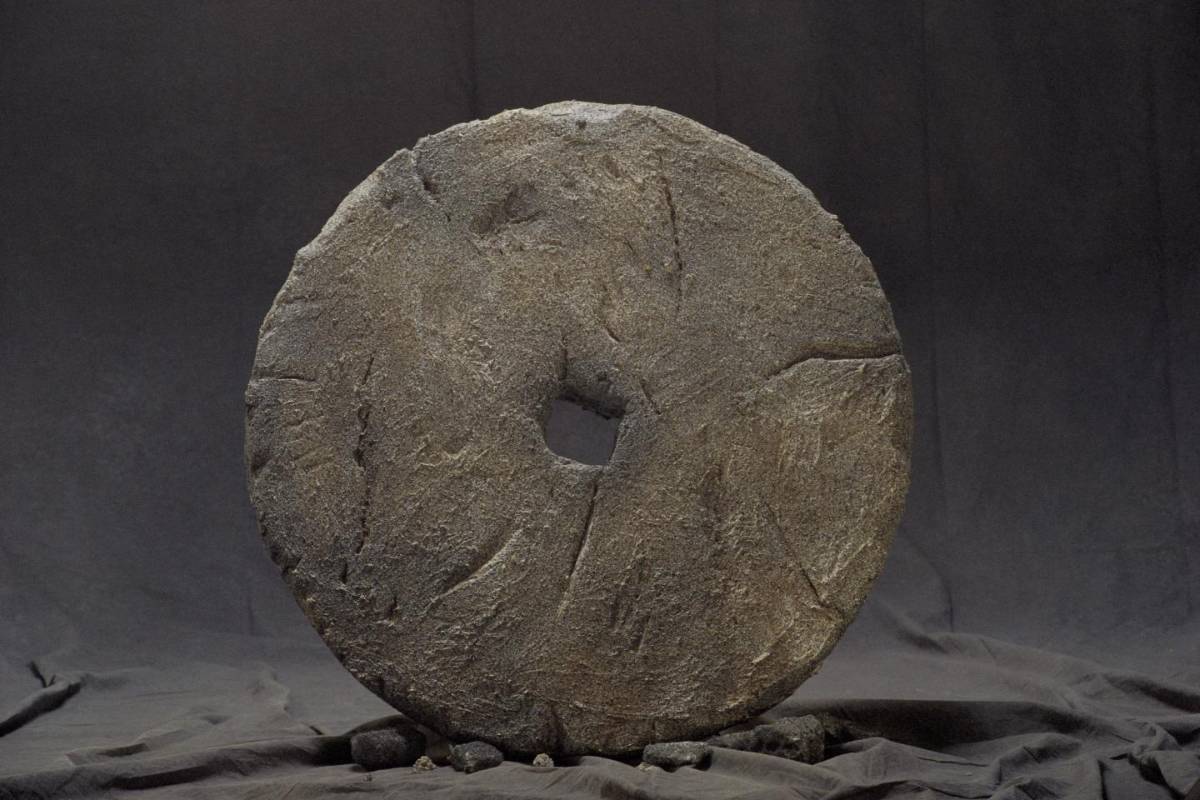
The invention of the wheel’s original purpose was not for transportation. The first wheel with an axle, also called the true potter’s wheel, was invented in Mesopotamia around 4200–4000 BC. Around this time, the Sumerians were living in a location called Sumer, some 100 miles upriver from the Persian Gulf in what is now Iraq. The smooth spinning and wheel-and-axle system distinguished this design.
This potter’s wheel was first used to mechanize industrial work. Heavy, swiveling stone wheels were used to shape the clay. The potter’s wheel made it easier to produce clay pots since it spun the clay quickly while allowing the craftsman to mold the pot with their hands.
4000 BC – The First Wheel Used for Transportation

Because the concept of a wheel most likely evolved over time, there was no single or multiple inventors of the wheel. For instance, a wheeled bull figurine from 3950–3650 BC was discovered in western Ukraine, and it is the oldest identified object that utilized a wheel. The artifact can be viewed at the Museum of Cultural Heritage located in Kiev.

In ancient Mesopotamia, we also find one of the earliest evidences of wheels being used for transportation. Investigations into the ancient Sumerian metropolis of Uruk, uncovered clay tablets with illustrations of four wheeled wagons dating back to 3500–3350 BC. The development of social hierarchies and the practice of domesticating plants and animals both occurred during this period.
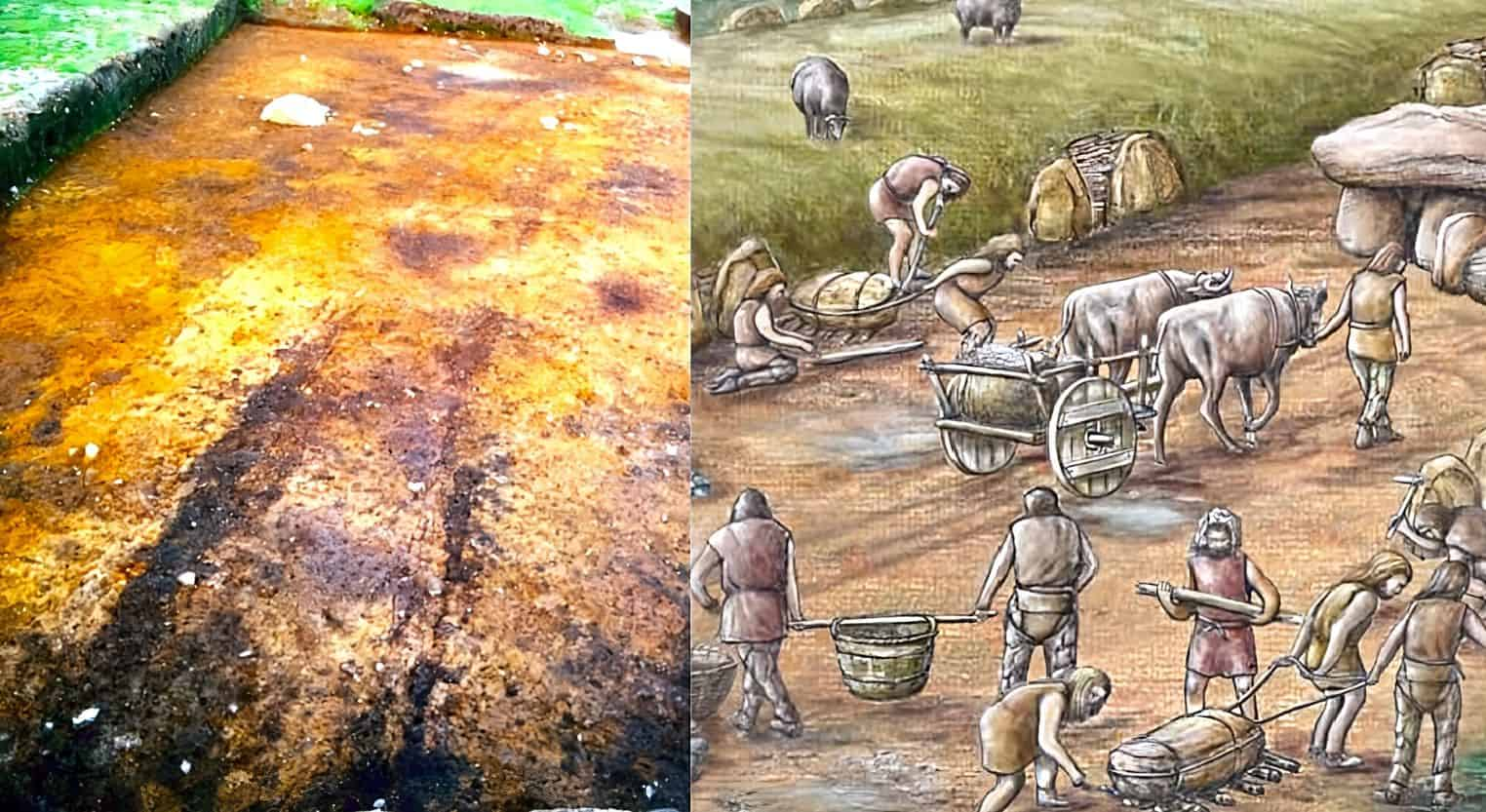
3500 BC onward, indications of more wheeled vehicles appear throughout Europe in the form of miniature toy cars, artistic renderings, and wagon tracks. The earliest known wheel tracks of a cart were discovered in northern Germany and are believed to date back to 3400 BC. They are marked by two distinct parallel lines.
Researchers have discovered those parallel lines in the vicinity of the prehistoric cemetery at Flintbek, Germany. Seven large stone tombs dating back to the Stone Age were discovered in this area, together with 14 burial mounds laid out in a crescent shape. The cattle carts seen in the artwork may have been used in the building of these massive megalithic tombs.
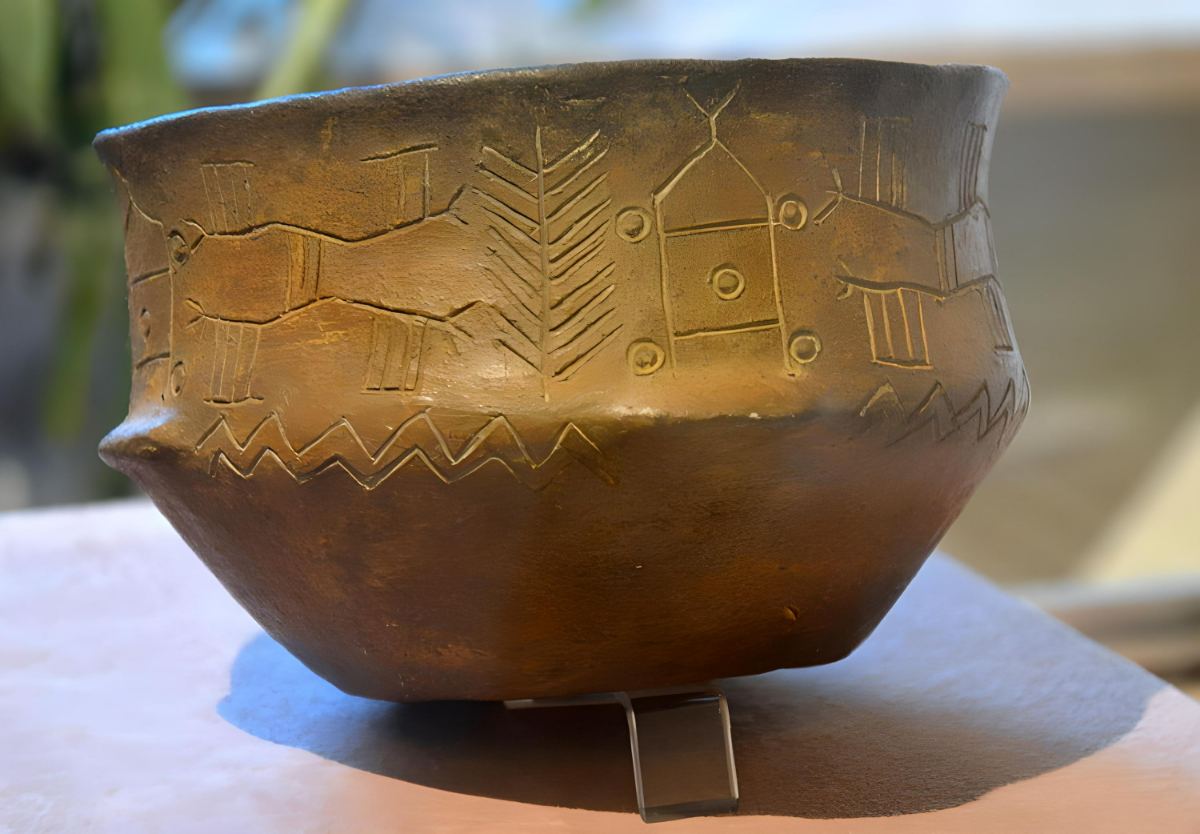
Around the mid-fourth millennium, wagons appeared in Central Europe: An ancient pot named “Bronocice pot” (dated to c. 3500 BC) bearing a depiction of a four-wheeled vehicle is among the oldest and most accurately dated illustrations of such a contraption in the world. Around c. 3300, the Baden culture of Hungary left behind wheeled miniature cups in the form of clay models in their graves. In western Europe, in the Jaunay-Clan commune in France, remnants of wheels dating back 5,000 years have been found.
3500 BC – Wooden Wheel with Axle

It was the addition of the axle that made the discovery of the wheel functional in the first place. As late as 4000 BC, humans were able to transport massive stones by rolling them along logs. Then, someone got the bright idea of drilling a hole in the middle of a round slice of wood and mounting an axle on it. This was the birth of solid disk wheels.
The first wheels used for transportation were axle-mounted wooden disks, which were developed in Europe (Ukraine) and Mesopotamia (Ur) around similar times. The Ljubljana Marshes Wheel is the oldest disk wheel from the Copper Age. It has a diameter of 72 cm (28.35 inches) and was discovered 12.5 miles (20 kilometers) south of Ljubljana in Slovenia.
3000 BC – The First Chariots

The disk wheel was first employed on carts and then later on chariots used in war. Around 3000 BC, the chariot was invented in Mesopotamia as a result of the solid wheels. The Sumerians used these disk wheels in their chariots. A depiction of a war cart with disk wheels on the Sumerian Standard of Ur from 2500 BC can be seen above. The chariot also quickly became popular in Egypt for various purposes, such as hunting, parading, and warfare.
The Fifth Dynasty (2465–2323 BC) of ancient Egypt is when the wheel first appears in written records. The Egyptian wagons with up to eight wheels and the ancient Egyptian carts are well documented. The earliest military uses of wheels can be traced back to a scaling ladder and a siege tower.
2000 BC – First Spoked Wheels

However, the disk wheels were too heavy. To decrease the weight, the first wheels with spokes appeared around 2000 BC. Wheels with spokes were lighter, and they allowed a lighter animal, such as a horse, to be used along with the cart.
The spoked wheel was first developed in the steppes of Central Asia around 2000 BC: The earliest discovered chariots with spoked wheels are from the burials of the Sintashta culture in Chelyabinsk Oblast, Russia. Around the same time, chariots with spoked wheels also appeared in Anatolia (Asia Minor).
The spoked wheel later spread to Egypt in 1600 BC. And it wasn’t until around 1500 BC that the spoked wheel made its debut in Mesopotamia. The invention of spoked wheels made it possible to create faster vehicles. A typical Bronze Age spoked chariot was able to move 10 times faster than any Roman soldier in 1200 BC. It was only around 1600 BC that lighter wheels with a break mechanism were developed.
1323 BC – The Chain Brakes

For a long period of time, wheeled vehicles could only be moved on certain surfaces using animal traction. This was true regardless of the design of the wheel and the vehicle. The first brakes have been a part of wheels since ancient times, especially on chariots. According to archaeologists, the chariots had a chain brake. A wooden piece was attached to the front of the rear wheels, and when the driver pulled up a chain, the piece of wood would rotate up against the front of the rear wheels and stop the vehicle.
750 BC – Wheels with An Iron Rim

As long as the conditions allowed, the wheel soon made its way from the Near East and Eastern Mediterranean through the rest of Eurasia, all the way to China and the Celtic world. Some of the graves of the so-called Pit Grave culture (or Yamnaya culture, c. 3300–2600 BC) in the Ukraine and southern Russia have yielded evidence of wheels and wheeled vehicles. This society buried their noteworthy individuals in holes covered with a mound of dirt and stone called a “kurgan.”
The oldest documented examples of chariots with an iron rim around the wheel date to the Celtic era (800–450 BC). The Celts added iron rims to the wooden wheels to increase the durability of their chariots on rough surfaces. They managed to do this by nailing the hot iron strips around the wheel, which snapped into place as they cooled. The iron rim made the construction of faster and more durable vehicles possible, enabling long-distance transportation.
300 BC – Water Wheel

The water mill, which was created by the Greeks and used to grind grain, was groundbreaking at the time. The Greeks invented water wheels that put the power of running water to work. They used these water wheels both to raise a bucket of water to higher levels for irrigation and to drive a shaft that drove a grinding machine. The first water wheels were not vertical. They had grindstones positioned atop vertical shafts with lower ends that dipped into rapid streams using a vane or paddles.
100 BC – Wheelbarrow
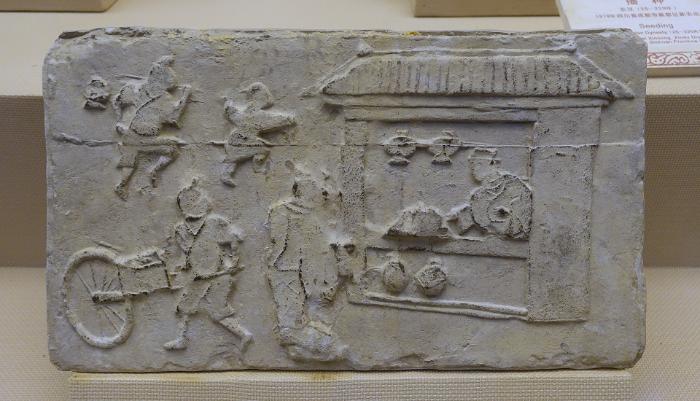
The Chinese built a wheelbarrow with a large central wheel on which the entire load was mounted. It was easy to push around, and some large wheelbarrows were used by up to six people.
Gears were also used in the mechanism of Antikythera, a wheel-shaped astronomical calculator built in Greece around 100 BC, but they were probably used much earlier in China.
1035 – Spinning Wheel

In China, a wheel was invented that included a hand shaft that allowed automatic and simultaneous operation of multiple hand shafts. Plant and animal fibers were transformed into thread or yarn by the spinning wheel, which was then used to weave textiles on a loom. It is uncertain whether the spinning wheel was invented in India before China, as there is no definitive evidence to confirm it.
Due to the continent’s rough topography, plentiful foliage, and absence of draught animals, the invention of the wheel was not necessary in pre-Columbian America. Some ancient Central American civilizations never invented the wheel. Peru was included in this. Mexico’s Aztec civilization developed the wheel but used it as a toy.
Spinning wheels, paddle wheels, norias for irrigation (a hydropowered scoop wheel), and many cogwheels are just a few of the various ways the wheel has been put to use outside of the textile industry.
The 1800s – The First Lever Brakes

The oldest braking mechanism had wooden brakes activated by pulling a chain. During the industrial revolution, wheels came in completely different forms. With the first lever brakes in the 1800s, a lever pushed a block of wood against the wheels. The mechanism was used for many years on carriages pulled by horses. This kind of brake included a long handle that served as a lever to facilitate braking.
Spoked wheels have survived to the present day because of constant refinement, from metal strapping in the Iron Age through rubber tires and the eventual replacement of wood with metal. As time went on, people stopped using animals to pull their heavy loads and instead relied on engines.
Nevertheless, human power is still required in vehicles with wheels, such as bicycles, rickshaws, and wheelbarrows used for carrying lighter loads. Since the time of the Romans, the invention of the wheel has required the construction of straight and paved roadways.
1845 – Hardened Rubber Car Tire

Robert Thomson used hardened rubber, discovered by Charles Goodyear in 1842, to patent a pneumatic tire in 1847 that was lighter and more resistant to wear. John Boyd Dunlop perfected his creation in 1888 and went on to start a factory in 1890. The hardened rubber tire was a milestone in the evolution of the wheel.
1848 – Mansell Wheel

The evolution of wheels continued unabated, with materials such as iron and steel being used to make wheels. Quieter and more flexible, the Mansell railway wheel had a central steel core surrounded by a solid disk of 16 oaks. In the 1840s, it was a popular design for passenger trains in England.
1902 – The First Drum Brakes

Louis Renault, a French automaker and pioneer, invented the mechanical drum brake in 1902. But it was Gottlieb Daimler who first thought a cable-wrapped drum connected to a vehicle’s frame might halt movement. And in 1899, he made the first prototype of a drum brake. Wilhelm Maybach created the first Mercedes in 1901 with a mechanical drum brake activated by a hand lever.
1915 – Radial Car Tire
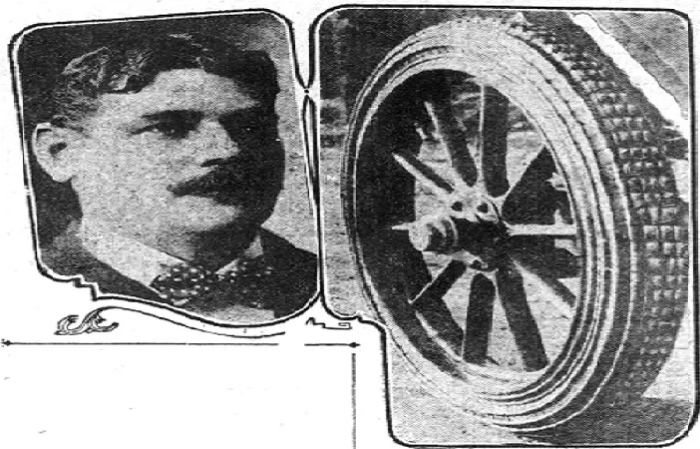
Patented by Arthur Savage, the radial car tire consisted of rubber-coated steel or polyester strips. These radial tires were further developed to change the radial tire industry once Michelin obtained the patent from Savage. Today, it continues to be used as a standard tire in almost all cars.
The 1930s – Airless Tires

One recent breakthrough in wheels came with airless tires. Early in the 20th century, James Vernon Martin, a well-known inventor of automobiles and aviation, created various innovations, including airless elastic tires. He gave them the names “Lightweight Resilient Tire” at first, “East Biding Tire” next, and “Elastic Tire” last.
The use of high-tech alloys such as titanium or aluminum in modern wheels has resulted in much faster, lighter, and less power-hungry vehicles. Today, racing bikes are made with composite carbon brakes, and car wheels have magnesium, titanium, and aluminum brakes.
Conclusion

The invention of the wheel marked the start of the modern era of equipment and greatly improved the efficiency of using horse traction in farming. This was accomplished by developing a dependable mechanism for controlling the direction of applied forces. Additionally, it opened up the possibility for new ways to both transmit and reduce force. Wheels are utilized in a vast array of applications in modern society, making it difficult to enumerate all of their uses.
FAQ About the Timeline of the Wheel
Who invented the wheel?
The first pottery wheel, as the forerunner of the wheel, was invented in the Near East, in Iran, by ancient Mesopotamians, around 5200–4700 BC. And the first wheel with an axle was invented in 4200 BC by the Sumerians. However, because the wheel’s concept most likely evolved over time, there was no single inventor or multiple inventors of the wheel.
Was the wheel discovered or invented?
What already exists naturally does not require creative interpretation. Humans stumbled across the wheel, and axles were invented. The natural world is filled with spherical, mobile objects that may have served as wheels for ancient humans.
Did ancient Egypt have the wheel?
The Fifth Dynasty (2465–2323 BC) of ancient Egypt is when the wheel first appears in written records. The Egyptian wagons with up to eight wheels and the ancient Egyptian carts are well documented. The earliest military uses of wheels can be traced back to a scaling ladder and a siege tower.
Why didn’t the Aztecs invent the wheel?
The ease with which boats could transport food and supplies provided the Aztecs with a significant advantage over wheeled vehicles. They resided in a hilly area, making wheels an impractical form of transportation. It was relatively simpler for them to transfer their goods over water.
Did ancient China have the wheel?
The ancient Chinese people had a wheel. The wheel is thought to have been invented around 5000 BC by the Mesopotamians, and the oldest evidence regarding wheels in China is from around 2800 BC.
Why didn’t the Incas invent the wheel?
Despite their sophisticated culture, the Incas never perfected the use of the wheel. The Inca Empire included the second-highest mountain range on Earth, making the wheel impractical for transporting goods there. Instead of wheels, the Incas used llamas and alpacas for transportation.
Did Africans invent the wheel?
There is no scientific evidence that Africans invented the wheel. But they probably utilized rolling objects such as tree trunks to move heavy objects in a more convenient way.
Did the Mayans have a wheel?
The Maya did not invent the wheel. The wheel was not there because there was no need for it. A little around 5000 BC, the wheel was invented in Mesopotamia.
Did the Native Americans have wheels?
Since they didn’t have access to wheeled transportation before Columbus’ arrival at the end of the 15th century, it is assumed that Native Americans were living in primitive, pre-industrial cultures for a long time.
Is the wheel older than the pyramids?
The wheel is older than the pyramids but when the ancient Egyptians constructed the pyramids, they relied on stone and copper instruments carried by the Nile River in boats rather than wheeled vehicles.
What is the oldest wheel ever found?
A wooden wheel was found in 2002 by Slovenian archaeologists around 12.5 miles (20 km) southeast of Ljubljana. This wheel is believed to be between 5,100 and 5,350 years old. It is the oldest wheel ever unearthed.
Who invented the pottery wheel?
Ancient Mesopotamians invented the pottery wheel. The first pottery wheel was invented around 5000 BC in the Near East in the form of tournettes, or u0022slow wheels,u0022 operated by hand with significant effort. Then, around 4100 BC, the Sumerians of Mesopotamia invented the u0022true potter’s wheel.u0022 Clay was never the same after that.
References
- Attema, P. A. J.; Los-Weijns, Ma; Pers, N. D. Maring-Van der (2006). “Bronocice, Flintbek, Uruk, Jebel Aruda and Arslantepe: The Earliest Evidence Of Wheeled Vehicles In Europe And The Near East“. Palaeohistoria. University of Groningen. 47/48: 10–28 (11).
- “Wheel“. Online Etymology Dictionary.
- “Transportation“. ISBN 9788184972436.
- Mitchell Lewis Ditkoff (2008). Awake at the Wheel: Getting Your Great Ideas Rolling (in an Uphill World). Morgan James Publishing. ISBN 9781600377709.
- Hans J.J.G. Holm: “The Earliest Wheel Finds, Their Archeology and Indo-European Terminology in Time and Space, and Early Migrations around the Caucasus.” Archaeolingua Alapítvány, Budapest, 2019, ISBN 978-963-9911-34-5.





